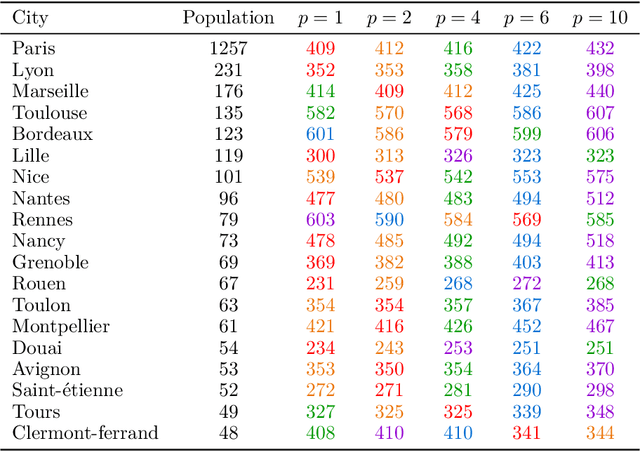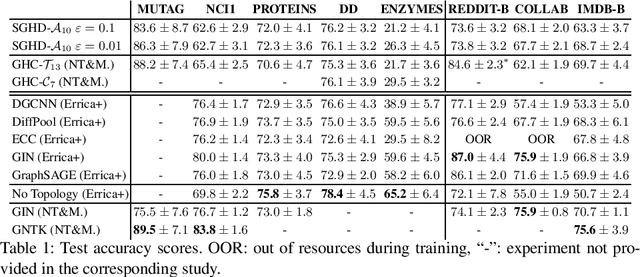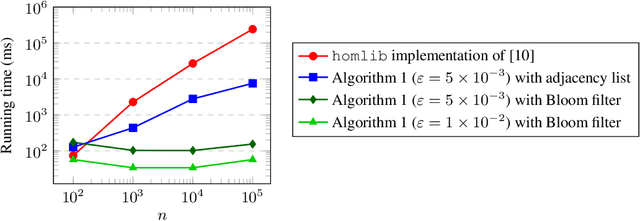Florian Sikora
Monte Carlo Graph Coloring
Apr 04, 2025Abstract:Graph Coloring is probably one of the most studied and famous problem in graph algorithms. Exact methods fail to solve instances with more than few hundred vertices, therefore, a large number of heuristics have been proposed. Nested Monte Carlo Search (NMCS) and Nested Rollout Policy Adaptation (NRPA) are Monte Carlo search algorithms for single player games. Surprisingly, few work has been dedicated to evaluating Monte Carlo search algorithms to combinatorial graph problems. In this paper we expose how to efficiently apply Monte Carlo search to Graph Coloring and compare this approach to existing ones.
Fair Railway Network Design
Sep 03, 2024



Abstract:When designing a public transportation network in a country, one may want to minimise the sum of travel duration of all inhabitants. This corresponds to a purely utilitarian view and does not involve any fairness consideration, as the resulting network will typically benefit the capital city and/or large central cities while leaving some peripheral cities behind. On the other hand, a more egalitarian view will allow some people to travel between peripheral cities without having to go through a central city. We define a model, propose algorithms for computing solution networks, and report on experiments based on real data.
Scaling up graph homomorphism for classification via sampling
Apr 08, 2021

Abstract:Feature generation is an open topic of investigation in graph machine learning. In this paper, we study the use of graph homomorphism density features as a scalable alternative to homomorphism numbers which retain similar theoretical properties and ability to take into account inductive bias. For this, we propose a high-performance implementation of a simple sampling algorithm which computes additive approximations of homomorphism densities. In the context of graph machine learning, we demonstrate in experiments that simple linear models trained on sample homomorphism densities can achieve performance comparable to graph neural networks on standard graph classification datasets. Finally, we show in experiments on synthetic data that this algorithm scales to very large graphs when implemented with Bloom filters.
The shortest way to visit all metro lines in a city
Apr 10, 2018



Abstract:What if $\{$a tourist, a train addict, Dr. Sheldon Cooper, somebody who likes to waste time$\}$ wants to visit all metro lines or carriages in a given network in a minimum number of steps? We study this problem with an application to the metro network of Paris and Tokyo, proposing optimal solutions thanks to mathematical programming tools. Quite surprisingly, it appears that you can visit all 16 Parisian metro lines in only 26 steps (we denote by a step the act of taking the metro from one station to an adjacent one). Perhaps even more surprisingly, adding the 5 RER lines to these 16 lines does not increase the size of the best solution. It is also possible to visit the 13 lines of (the dense network of) Tokyo with only 15 steps.
 Add to Chrome
Add to Chrome Add to Firefox
Add to Firefox Add to Edge
Add to Edge